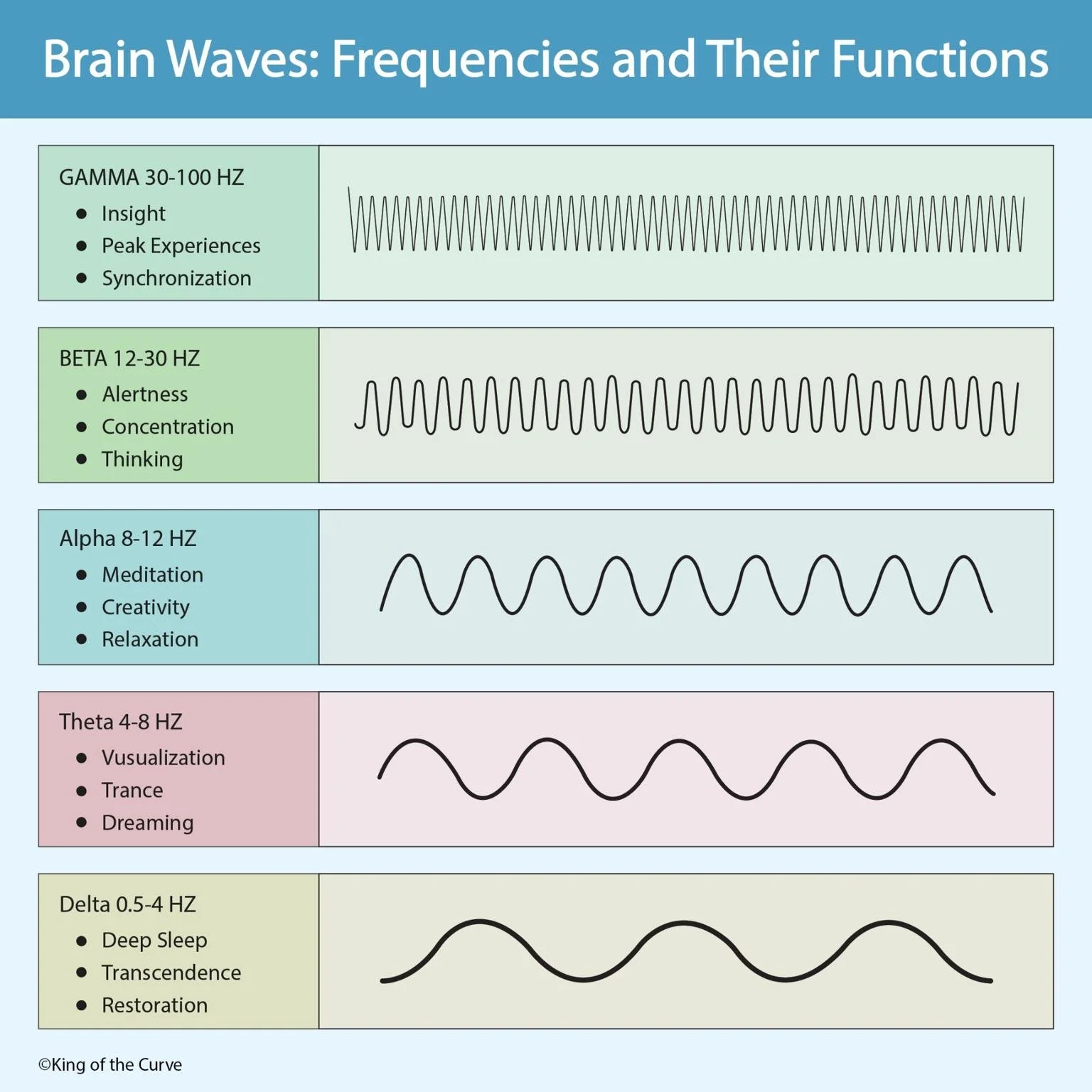🧠 Understanding Brain Waves: Frequencies and Their Functions
The human brain is an incredibly sophisticated organ, operating through intricate networks of neurons that communicate via electrical impulses. These impulses form distinct brain waves, each associated with unique mental states, behaviors, and cognitive functions. Understanding these waves can provide insights into how our brains operate during different activities — from deep sleep to intense concentration.
🔊 What Are Brain Waves?
Brain waves are patterns of electrical activity occurring in the brain. They are categorized based on their frequency (measured in Hertz, Hz), which represents the number of cycles per second. Each type of brain wave is linked to specific states of consciousness, alertness, and behavior.
🧠 Types of Brain Waves and Their Functions
Let’s break down the five major types of brain waves and explore their roles in mental and emotional processes:
1. Gamma Waves (30–100 Hz)
Functions:
Insight
Peak experiences
Neural synchronization
Gamma waves are the fastest brain waves and are associated with heightened perception, problem-solving, and advanced cognitive functioning. They play a key role in learning and memory integration. Studies have shown increased gamma activity in states of deep meditation and heightened awareness.
2. Beta Waves (12–30 Hz)
Functions:
Alertness
Concentration
Thinking
Beta waves dominate our normal waking consciousness and are involved in active thinking, decision-making, and focused attention. High levels of beta activity are observed when you're engaged in work, conversation, or studying. However, excessive beta waves can be linked to stress and anxiety.
3. Alpha Waves (8–12 Hz)
Functions:
Meditation
Creativity
Relaxation
Alpha waves emerge in calm and restful states, often when the eyes are closed but the person is still awake. They are commonly observed during meditation and creative thought, serving as a bridge between conscious thinking and subconscious insight.
4. Theta Waves (4–8 Hz)
Functions:
Visualization
Trance
Dreaming
Theta waves are linked to deep relaxation, emotional processing, and dream states. They occur most often in light sleep, hypnosis, and during spiritual or trance-like experiences. Theta activity also plays a key role in memory formation and intuition.
5. Delta Waves (0.5–4 Hz)
Functions:
Deep sleep
Transcendence
Physical healing
Delta waves are the slowest and are dominant during deep, restorative sleep (NREM sleep). They are crucial for healing and regeneration, helping to maintain overall health. A lack of delta wave sleep can impair immune function, cause fatigue, and lower resilience.
🧘 How Brain Waves Impact Your Life
Being aware of your brain waves can help you better manage mental health, productivity, and well-being. For instance:
Meditation enhances alpha and theta waves, promoting creativity and calmness.
Cognitive tasks boost beta and gamma activity, increasing focus.
Good sleep ensures healthy delta wave patterns, essential for recovery.
🌐 Final Thoughts
Understanding your brain wave states can unlock deeper control over your mental states and improve daily performance. Whether you're aiming for better sleep, increased focus, or enhanced creativity, tuning into your brain’s natural rhythms is a step toward optimal mental functioning.
Frequently Asked Questions (FAQs)
-
Aim for 4-6 focused hours, ensuring you incorporate breaks to avoid burnout.
-
Practice mindfulness techniques, take practice exams under realistic conditions, and maintain a balanced lifestyle.
-
Set short-term goals, seek support from mentors, and reward yourself for small achievements.
-
Regular exercise improves focus, reduces stress, and enhances overall mental clarity.
-
KOTC offers personalized learning tools, gamification features, and adaptive question banks to help students stay on track without burnout.


